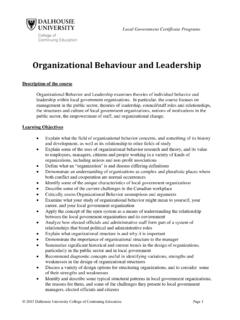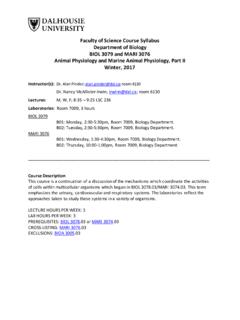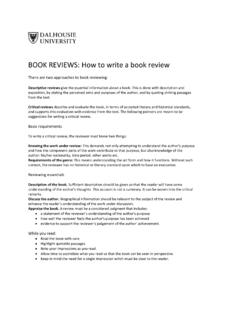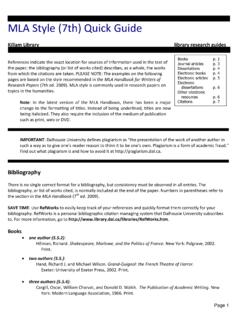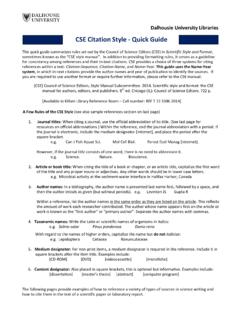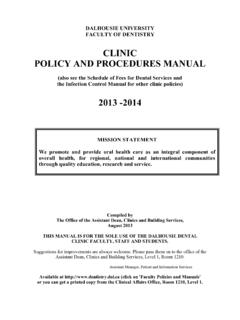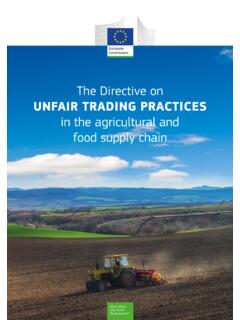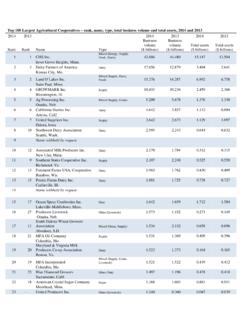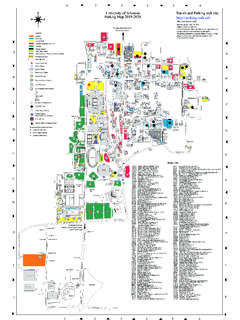Transcription of CANADA’S FOOD PRICE REPORT - Dalhousie University
1 CANADA SFOOD PRICE REPORT11TH EDITION2021 Dalhousie University MEMBERSDr. Sylvain Charlebois (Lead Author, Project Lead - Dalhousie University )Faculties of Management and Agriculture Gerhardt Faculty of Applied Social Sciences TaylorFaculty of Computer KaneFaculty of Computer Dr. Vlado Keselj Faculty of Computer Science Elizabeth FittingFaculty of Applied Social Sciences Dr. Karen FosterFaculty of Applied Social Sciences Kathleen KevanyFaculty of Agriculure Dr. Stefanie ColomboFaculty of Agriculure Music Faculty of Agriculure Don OF GUELPH MEMBERSDr. Simon Somogyi (Project Lead University of Guelph) Gordon S.
2 Lang School of Business and Economics Ethan JacksonVector Institute & School of Engineering AND ADVISORSDr. Graham Taylor School of Engineering Jess Haines Family Relations and Applied Nutrition Uys Ontario Agricultural College (OAC) Erna Van Duren Gordon S. Lang School of Business and Economics OF SASKATCHEWAN MEMBERSDr. Stuart Smyth Agricultural and Resource Dr. Rim LassouedAgricultural and Resource University OF BRITISH COLUMBIA MEMBERSDr. James VercammenFaculty of Land and Food Dr. Kelleen WisemanFaculty of Land and Food Dr. Richard Barichello Faculty of Land and Food Dr.
3 Matias MargulisSchool of Public Policy and Global Affairs PRODUCTION TEAMJ anet LordCopy Editor, Paragon ServicesErin CaseyCommunications Christine DarrahDesigner, Dalhousie Design Services2 | CANADA S FOOD PRICE REPORT 2021 TABLE OF CONTENTSEXECUTIVE SUMMARY 4 OVERVIEW OF 2019: HOW WE DID 6 COVID -19 9 COVID-Related Facility and Safety Measures 9 Shift from Food Service to Food Retail 10 Shifting Consumer Demands 11 Growing Income and Food Insecurity 12 Canadians Changing Relationship with Food 14 Revisiting Local Food Supply Chains 15 Low Oil Prices and the Canadian Dollar 15 CANADA S FOOD PRICE REPORT .
4 2021 FORECAST 16 Methodology 16 Recurrent Neural Network Model 16 Ridge-Regularized Linear Regression Model 172021 Macroeconomic Factors and Drivers 18 Food PRICE Forecast by Province 20 The 2021 Watch-List Items 21 What to Expect in 2021 24 COVID-19 and Changing Trends in the Food Supply Chain 24 Sustained Consumer Demand and Investment in E-Commerce 24 Agricultural Trade 25 Food Manufacturing 26 Plastic Packaging 26 Continued Action to Mitigate Climate Change 27 PREPARED BY Dalhousie University | University OF GUELPH | University OF SASKATCHEWAN | University OF BRITISH COLUMBIA | 3 EXECUTIVE SUMMARY This is the 11th edition of Canada s Food PRICE REPORT , published annually by Dalhousie University and the University of Guelph.
5 In 2021, for the first time, Canada s Food PRICE REPORT welcomes the University of Saskatchewan and the University of British Columbia to the team. This year, the REPORT faces unusual challenges due to the unexpected and unprecedented global COVID-19 pandemic. The impacts of the pandemic and the uncertainty that accompanies it will continue into 2021. COVID-19 has caused economic volatility in global markets and presented rapidly changing circumstances and disruptions to which all stages of the agri -food supply chain from farmgate to retail must quickly adapt. It has also induced changes to consumer habits and preferences, and the question remains whether these changing habits will become the new normal.
6 Therefore, the 2021 Canada s Food PRICE REPORT focuses on the impacts of the pandemic and recognizes that the future is shrouded in uncertainty. In last year s REPORT , our models predicted that overall food prices would increase 2 to 4% in 2020 and that the average Canadian family would spend up to $12,667 on food. Based on the 2020 inflation rate to date, they are likely to spend $12,508 in 2020, if consumers continue to visit restaurants at the same rate as past years. Due to the pandemic, that is highly unlikely. Besides the pandemic, many other factors contributed to a rise in food prices this year.
7 Our forecasts for 2020 were reasonable in predicting the percent change in many food categories; however, our predictions for bakery, dairy and meat were slightly below ( to ) what was actually observed. For meat, especially, the increase in PRICE significantly outpaced our forecast. For 2021, the REPORT uses the same categories of food and makes the following predictions: 2021 FOOD PRICE FORECASTS Food CategoriesAnticipated Changes (%) to to 3%Fruits2% to 4% to to 4%Restaurants3% to 5% to to Increase in Food Prices3% to 5%4 | CANADA S FOOD PRICE REPORT 2021 Over the last decade, this REPORT has considered many market instruments and macroeconomic factors in its forecasts: financial indicators, recession signals, currencies and Canada-specific information.
8 The 2021 REPORT forecasts that overall food prices will increase 3 to 5%. In previous years, Canada s Food PRICE REPORT predicted an annual food expenditure for the average Canadian family. This year, recognizing the diversity of Canadian families, we are providing average food expenditure by individual consumer based on age and gender. This allows the reader to construct the household or family that best reflects their own reality. We are also using a new food basket, excluding food service altogether even though we are still providing a forecast for menu prices. For example, based on a family that includes a man (age 31 50), woman (age 31 50), boy (age 14 18) and girl (age 9 13), the annual food expenditure is predicted to be $13,907 in 2021, which would be an increase of $695 (5%) compared to 2020, excluding food service.
9 In dollars, that is the highest predicted increase by Canada s Food PRICE REPORT . The food inflation rate in 2021 is likely to outpace the general inflation rate. 2020 experienced the unprecedented COVID-19 global pandemic. The pandemic affected the entire agri -food chain from farmgate to consumers. It caused border and facility closures, shifted consumer demand from food service to food retail and created unemployment and underemployment. It also introduced modifications in production, manufacturing, distribution and retailing practices to accommodate enhanced safety procedures, from testing of personnel to additional time for sanitizing.
10 The repercussions and uncertainty of the pandemic continue to impact the global economy. This year also saw an oil PRICE war and devaluation of the Canadian dollar, which impacted food prices. PREPARED BY Dalhousie University | University OF GUELPH | University OF SASKATCHEWAN | University OF BRITISH COLUMBIA | 5In 2021, we can expect to feel the continued effect of COVID-19 on our agri -food chain and global food systems, in addition to the growing impact of climate change. We can also expect to see adaptations in the agri -food chain based on lessons learned from the pandemic, for example, the growth in e-commerce platforms and online services.
